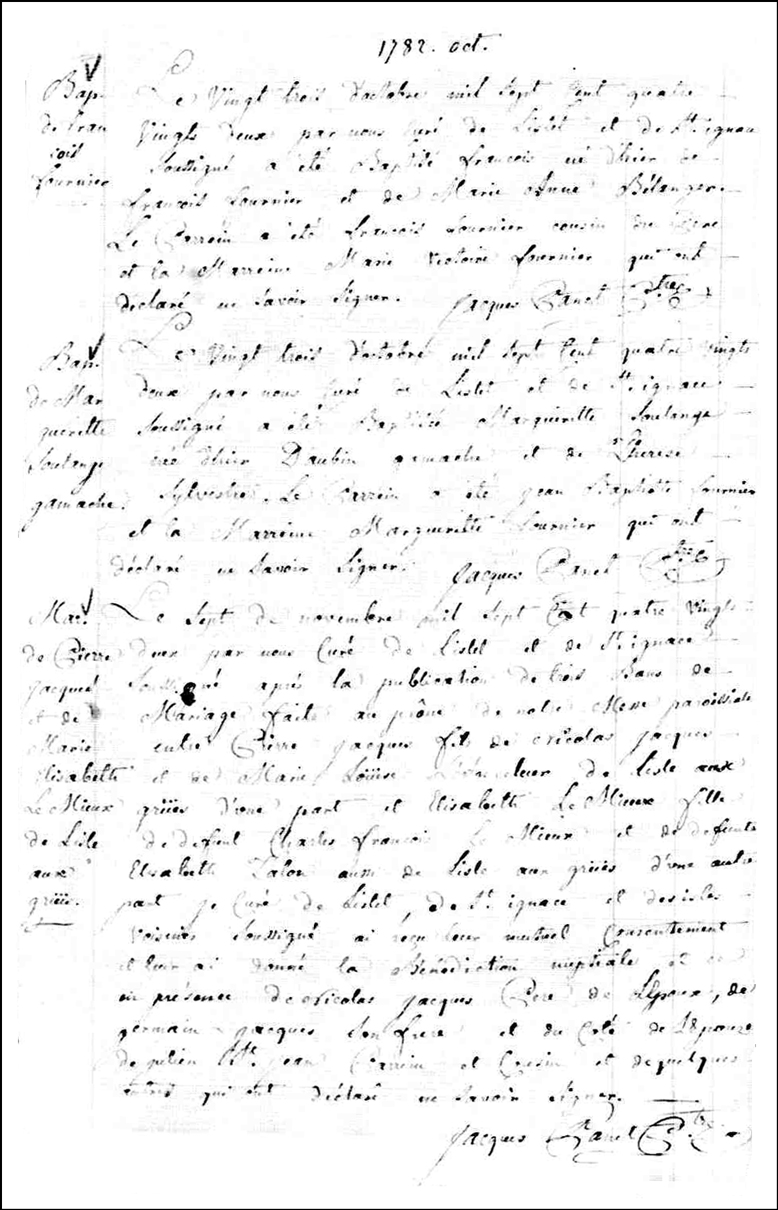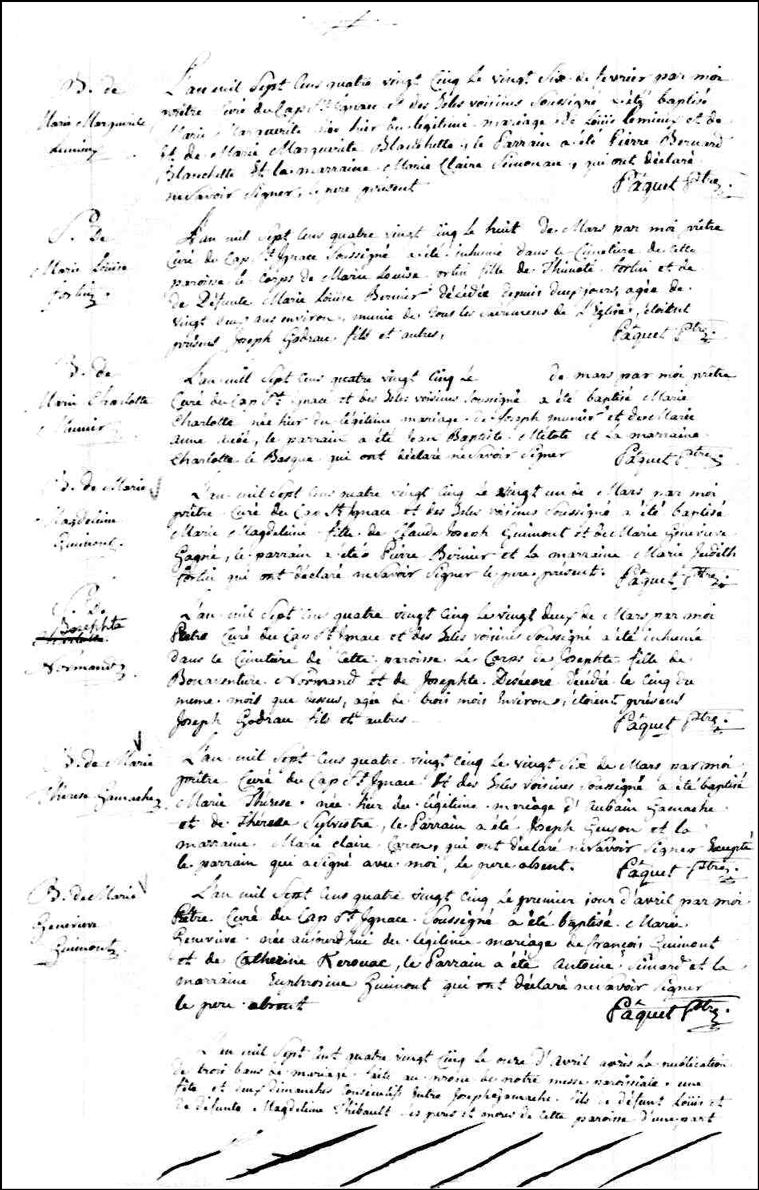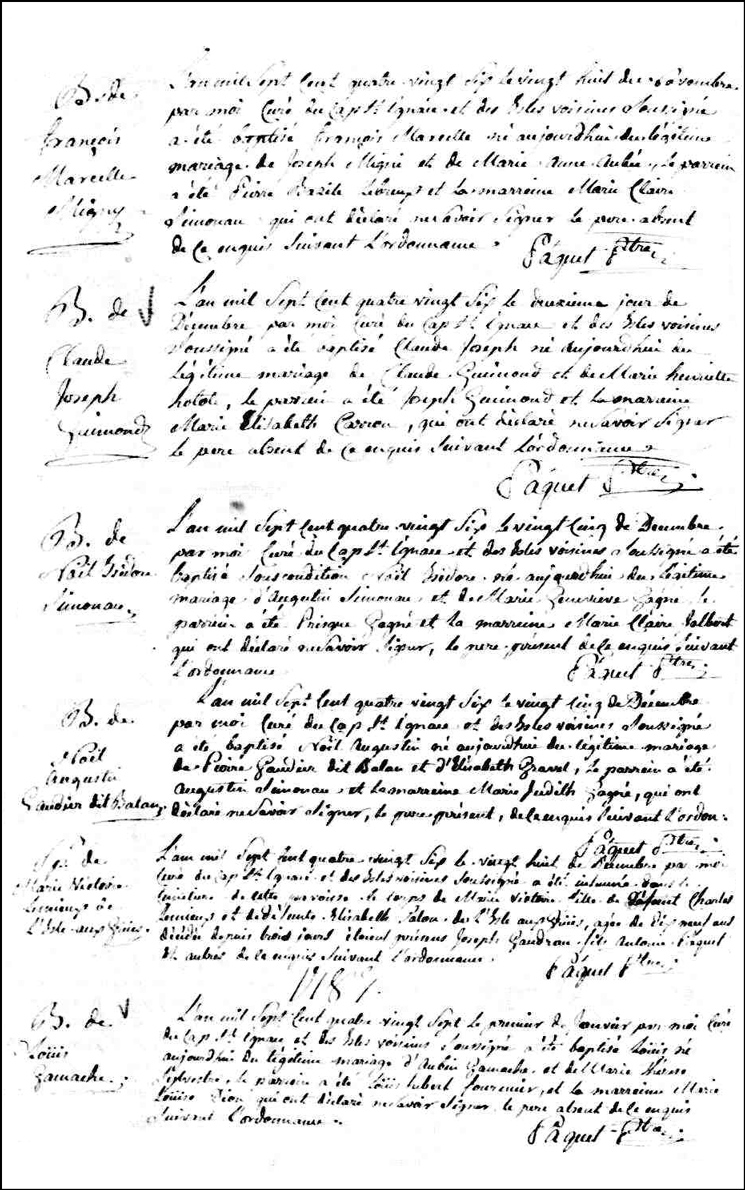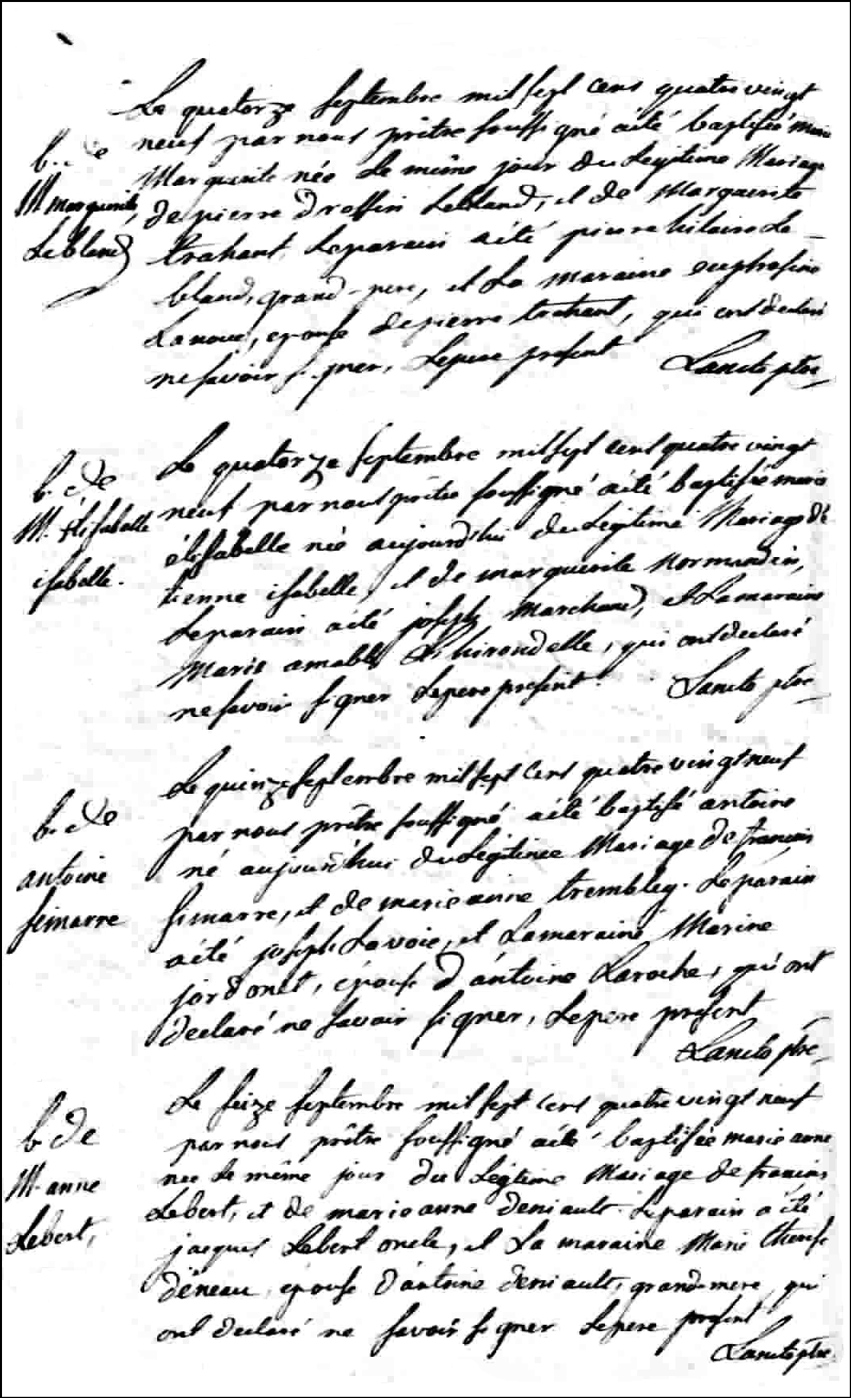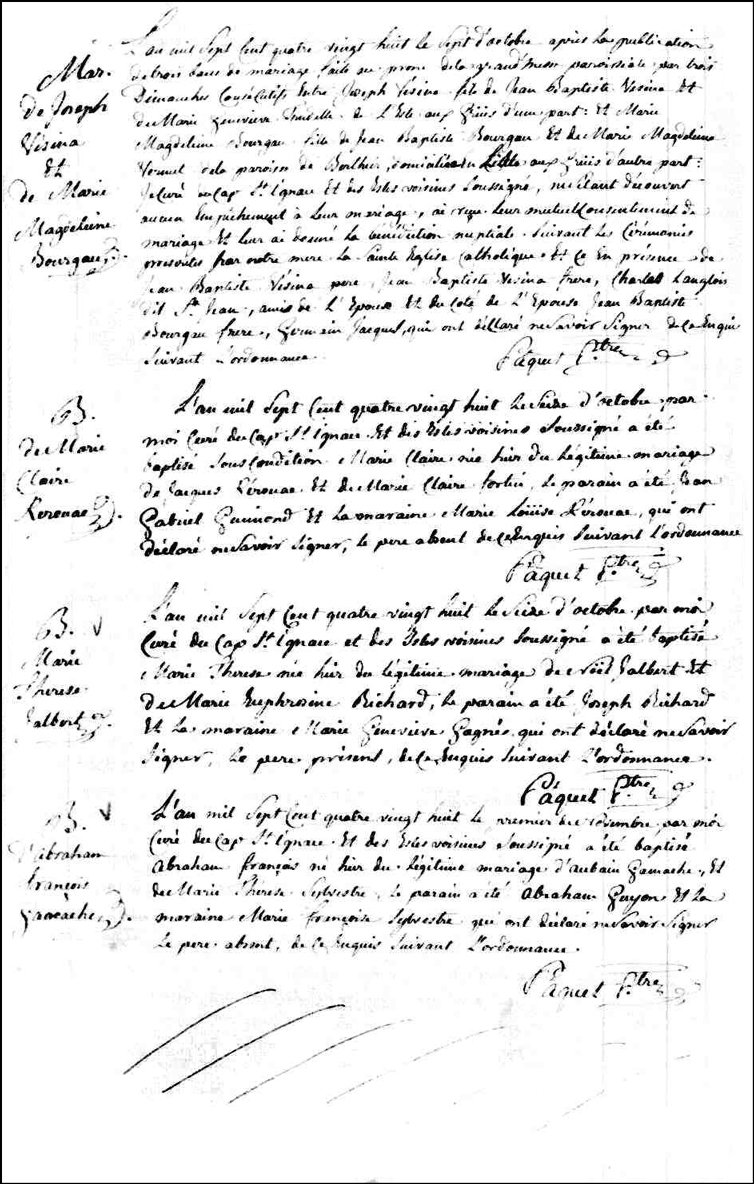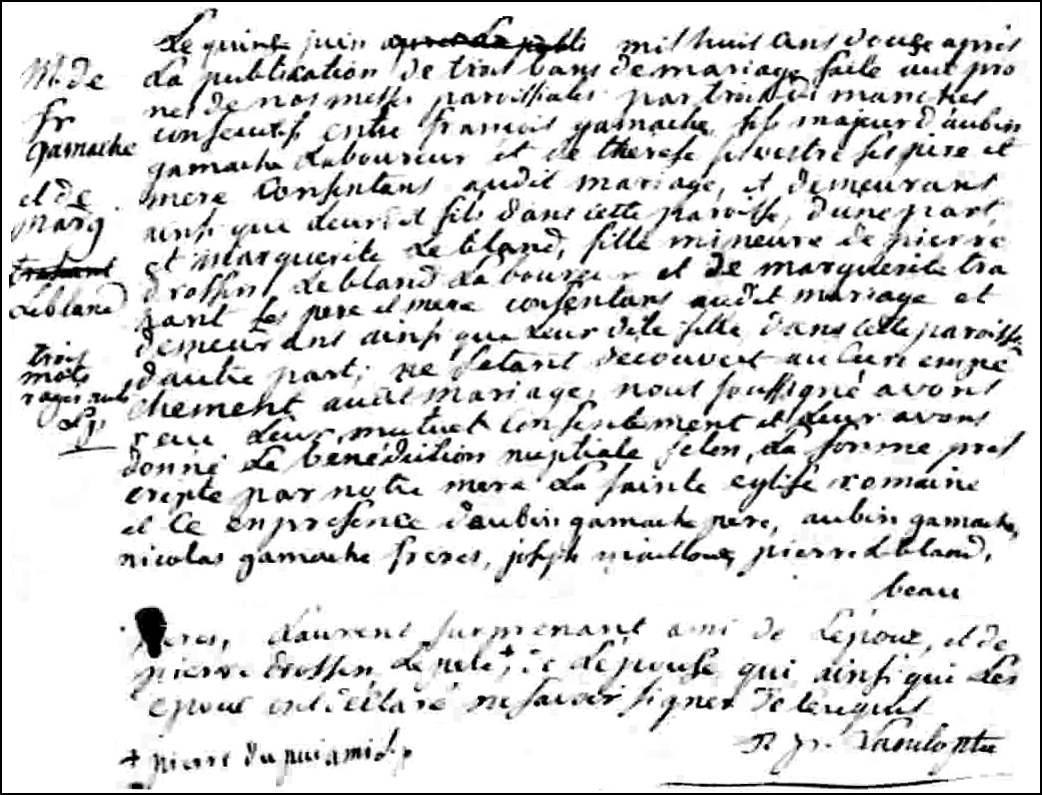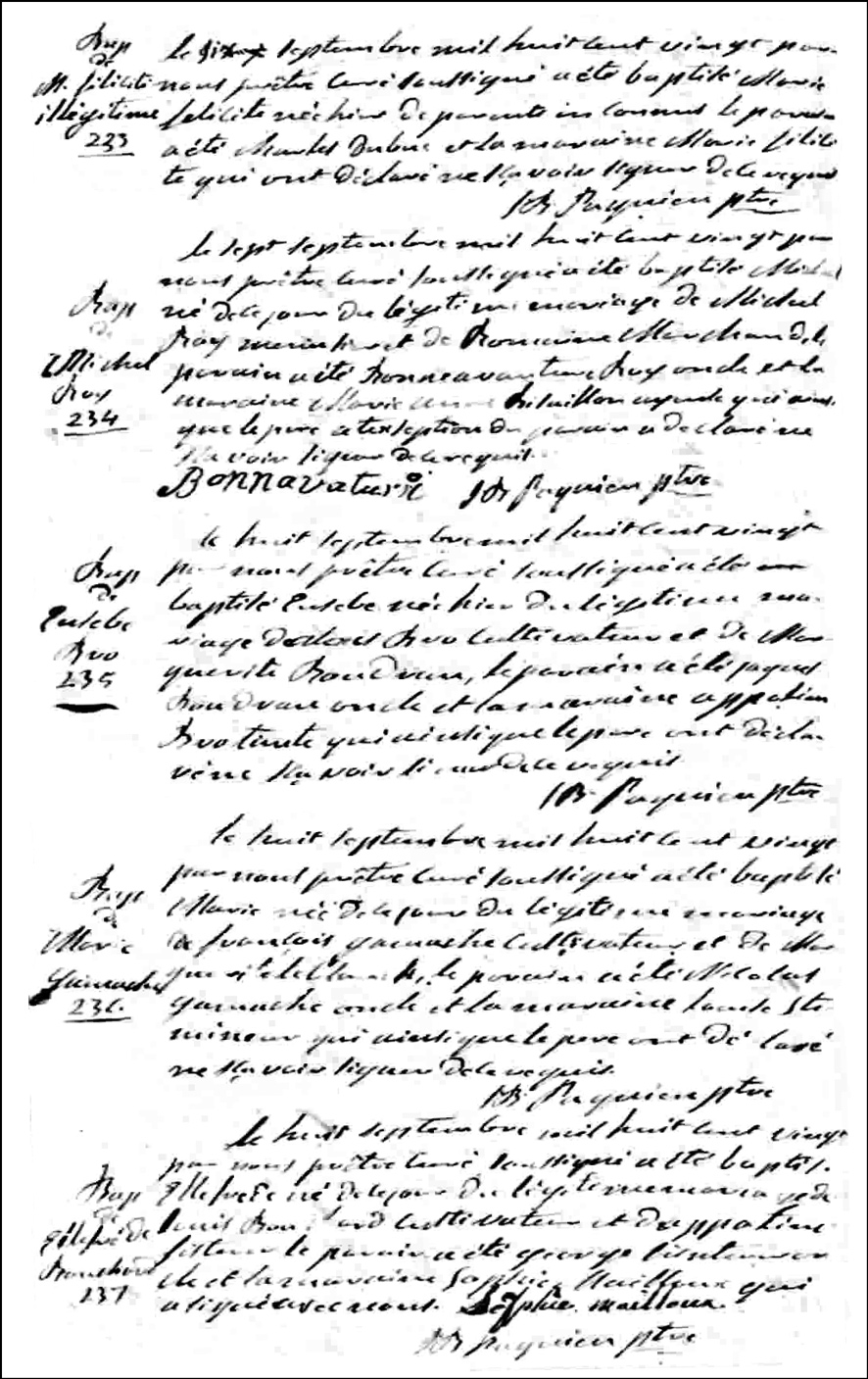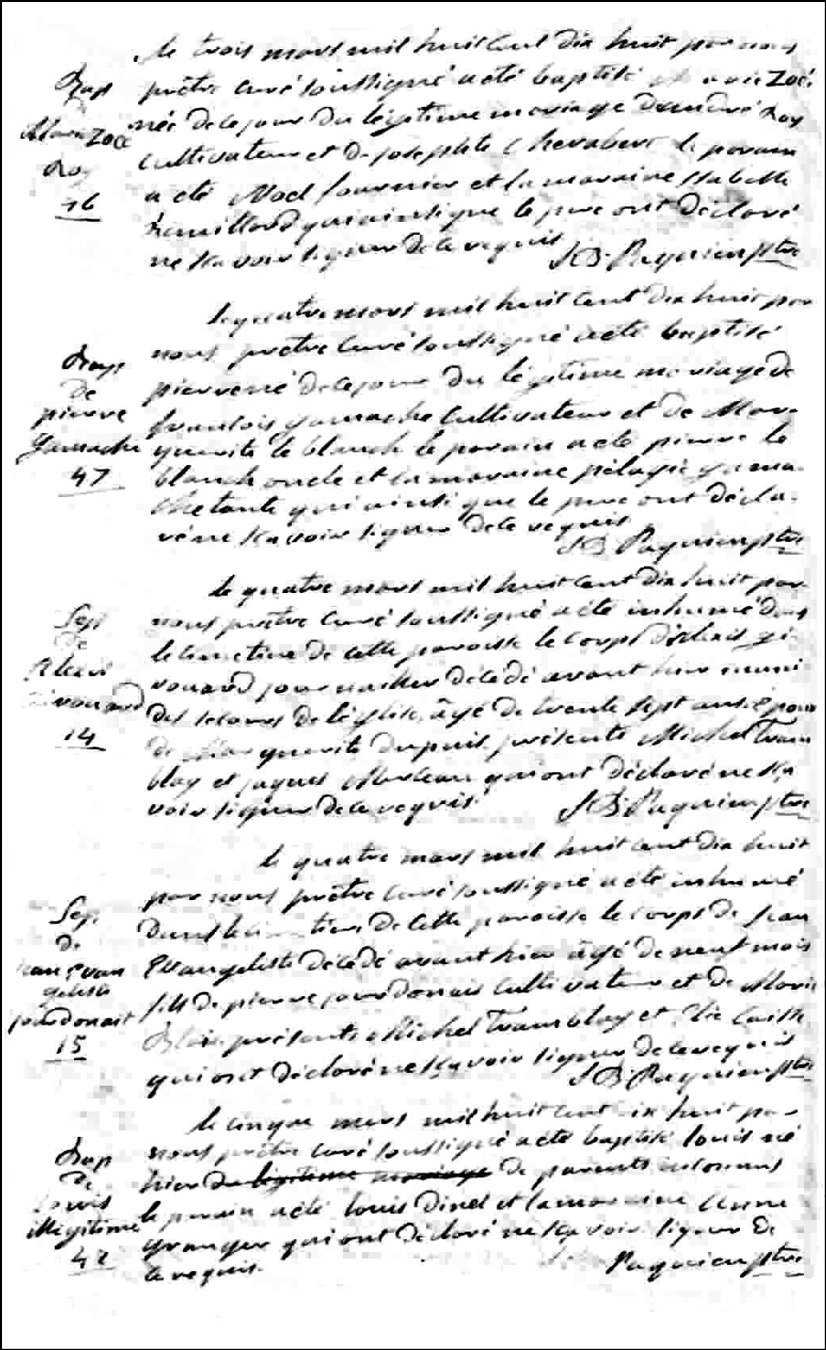I’m hoping to attend this year’s Annual Conference of the Polish Genealogical Society (PGSA) from September 28-30, 2007. I’ve attended the PGSA’s Annual Conference every year for the past several years and can credit what I learned at past conferences to helping me break through my Niedziałkowski brickwall.
But, let me start at the beginning.
My First Visit to the Family History Library
In the spring of 2001, I visited the Family History Library (FHL) for the first time, but I was unfamiliar with the library’s holdings. When I asked one of the volunteers if they had copies of European church records, he looked rather surprised that I would ask such a question, pointed to the rows and rows of microfilm cabinets on the other side of the room, and said “That’s what all those are!”
I, of course, had no idea of how to find the right microfilms in the vast collection at the FHL. The volunteer kindly helped me search the FHL catalog to see if the records for my ancestral villages were in the collection. We searched for all the place names in Poland I knew: Nienadowa, Dubiecko, and Pomaski. Unfortunately, we could find no records for any of these villages in the library’s holdings.
My First Genealogy Conference
The following year, I decided to attend the Annual Meeting of the PGSA. This conference was the first genealogy conference I ever attended, and I wasn’t quite sure what to expect. The meeting was held in Rosemont, Illinois (just outside of Chicago) and ran from October 4-6, 2002.
I had taken that Friday off from work and planned to catch a flight at about 9 AM which would get me into Chicago well in advance of the first lecture at 7 PM on Friday evening. I should have taken the 8 AM flight. By 9 AM PDT, flights from San Francisco to Chicago were grounded due to bad weather in the Midwest. I didn’t arrive at the hotel until 9 PM CDT.
IÂ had missed the Friday night lecture by Fred Hoffman on “A Crash Course in Polish (What you need to know to translate documents)”. Even so, I approached the Saturday lectures with the conviction to learn as much as I could about finding records in Poland.
As it turned out, Daniel Schlyter, Loretto Szucs, and Ceil Jensen were each giving four lectures on Saturday and one on Sunday. I had decided that Daniel Schlyter’s lectures were the most appropriate for my needs, and so I settled in for five hours of Daniel speaking on:
- The Hamburg Passenger Lists AND Other European Departure Records
- Building Your Polish Pedigree Using Church Records and Civil Registrations
- Sources and Procedures for Genealogical Research in RUSSIAN POLAND
- Sources and Procedures for Genealogical Research in AUSTRIAN POLAND
- The Changing Map of Poland
Boy, I learned so much, I was almost suffering from information overload. Before I attended the conference, I hadn’t known about the Partitions of Poland, I knew nothing about European Departure Records, and I had very little idea about how to research my Polish ancestry. By the end of the conference, all that had changed.
After the Conference
I was so excited about this new knowledge that, the very next weekend, I flew to Salt Lake City to have another look at the records in the FHL.
The first thing I wanted to do was consult a gazetteer to find out where the parish for the village of Pomaski was located. Pomaski was the ancestral village of my maternal grandfather, Kostanty Niedziałkowski.
In my previous visit to the FHL, I had looked for records for the village of Pomaski. At the PGSA conference I learned that I had to look for the parish to which Pomaski belonged and look for records in the parish. I consulted a gazetteer and found that the parish for Pomaski was in Szwelice. From there I went to the FHL catalog and found — Szwelice! The FHL had microfilmed church records from Szwelice for the period of 1693-1904!
From then on, I worked like a machine, searching the microfilms for the parish of Szwelice. I found lots of Niedziałkowskis in the records for the village of Pomaski in the parish of Szwelice. It looked like this brickwall was going down!
Based on what I learned at the PGSA conference, I knew that late 19th century records in Szwelice were written in Russian and early 19th century records were written in Polish. After Napoleon gained control of Poland (about 1807) Polish parish records were kept in detail-rich paragraph-style entries, and the basic format for each of the three record types (birth/baptism, marriage, and death) remained unchanged for the next century. I knew what to look for, and I knew a little about how to translate the records.
Finding the Records for My Ancestors
I couldn’t find the baptismal record for my grandfather, nor could I find the marriage record for his parents. I did, however, find the baptismal records for my grandfather’s siblings.
Tracing the records back further, I found that the family had previously lived in the village of Mosaki-Godacze in the parish of Krasne. I found more records there, going back to 1746!
Just recently I learned that, before the Niedziałkowski family moved to Mosaki-Godacze, they lived in Klonowo, a village belonging to the parish of Pałuki. I’ve ordered the microfilms for Pałuki through my local Family History Center and I’m now waiting for the films to arrive. They should be here any day. Using the records from the parish of Pałuki I’m hoping to trace the Niedziałkowski family back another hundred years!
I’ve attended the PGSA Annual Conferences in 2003, 2004, 2005, and 2006. I’ve made friends who also attend the conference every year. Now, the conference is as much a social event for me as it is a learning opportunity.
Copyright © 2007 by Stephen J. Danko

